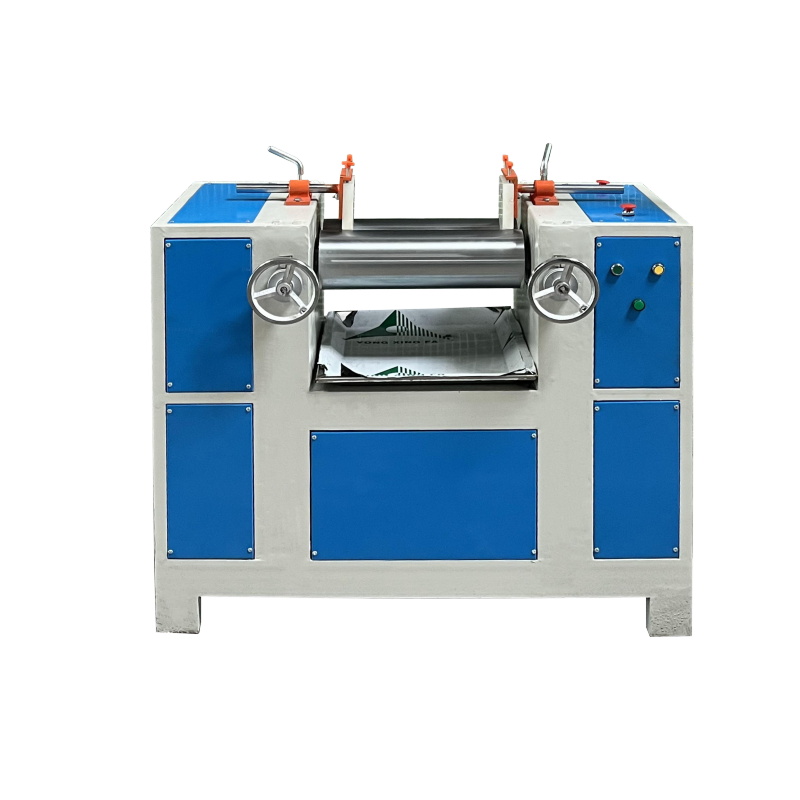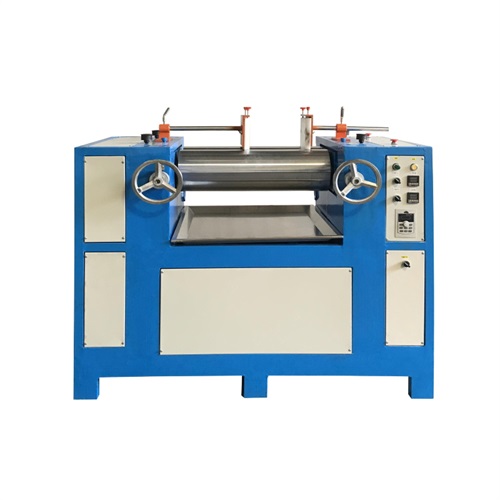
Rubber refiner mills play a significant role in the development of the rubber industry by enabling the processing of raw rubber materials into high-quality compounds that can be used in a wide range of rubber products.Rubber refiner mills allow manufacturers to precisely control the mixing and kneading process of rubber compounds, resulting in consistent and improved product quality. This is crucial for producing rubber products that meet or exceed industry standards and customer expectations.The ability to create tailored rubber compounds opens up opportunities for innovative product designs. Manufacturers can develop rubber products with enhanced durability, performance, and specialized characteristics to meet evolving market demands.Rubber refiner mills allow for efficient batch or continuous processing of rubber compounds. This leads to increased productivity, reduced processing times, and ultimately lowers manufacturing costs.Rubber refiner mills are a cornerstone of the rubber industry's development and growth. Their ability to refine and process raw rubber materials into high-quality compounds with improved properties contributes to product innovation, efficiency, and the ability to meet diverse market demands.
Model | YX-SL160 |
Diameter of Roll(mm) | 155mm |
Length of Roll(mm) | 500mm |
Maximum roll distance(mm) | 10mm |
Single feed | 1-5KG |
Power | 2.2KW |
Rotation Speed of Front Roll(rpm) | 18r/min |
Roll speed pattern | Constant speed (adjustable speed/double adjustable speed) |
Bearing situation | Insert bearing |
Reducer casing | planet-gear speed reducer |
Voltage | 380V |
Weight | ~500KG |
Dimension(L*W*H) | 1250*800*1150mm |

A rubber refiner mill, also known as a rubber mixing mill or rubber calender mill, is a machine used in the rubber processing industry. Its primary function is to refine and homogenize the raw rubber material into a specified consistency. Here are some key features and functions of a rubber refiner mill:
Mixing and Homogenization: The primary purpose of a rubber refiner mill is to mix and homogenize rubber compounds. It achieves this by passing the rubber material through two counter-rotating rolls. The gap between the rolls can be adjusted to control the thickness of the rubber sheet.
Size Reduction: The mill also helps in reducing the size of the rubber particles. This is crucial for achieving uniformity and consistency in the rubber compound, which is essential for subsequent processing steps.
Temperature Control: Rubber refiner mills often come equipped with temperature control mechanisms. Controlling the temperature during the mixing process is important for achieving the desired properties in the final rubber product.
Processing Multiple Ingredients: Rubber compounds often consist of various ingredients, including rubber polymers, fillers, plasticizers, and curing agents. The refiner mill effectively blends these components to create a uniform mixture.
Calendering: Some rubber refiner mills are also equipped with calendering capabilities. Calendering involves passing the rubber sheet through additional rolls to achieve the desired thickness and smoothness.
Batch Processing: Rubber refiner mills are typically used for batch processing. The raw materials are added to the mill, processed, and then the finished product is removed before starting a new batch.
Quality Control: The use of a rubber refiner mill allows for better control over the quality of the rubber compound. Manufacturers can adjust processing parameters to meet specific requirements for different types of rubber products.
Customization: Rubber refiner mills are available in various sizes and configurations, allowing manufacturers to choose the equipment that best suits their production needs.
Safety Features: Modern rubber refiner mills often come with safety features such as emergency stops and protective guards to ensure the safety of operators during the processing.
It's important to note that the design and features of rubber refiner mills can vary based on the specific requirements of the rubber processing application. These machines play a crucial role in the rubber industry by contributing to the production of a wide range of rubber products, including tires, belts, hoses, and other rubber goods.
Essential details | |||
Diameter of Roll(mm) | 160 mm, 160mm | Year | 2020 |
Rotation Speed of Front Roll(rpm) | 1 - 18 rpm, 18r/min | Warranty | 1 Year |
Length of Roll(mm) | 500 mm, 500mm | Key Selling Points | Long Service Life |
Roll Ratio(Front/Back) | 01:01.3 | Power (kW) | 2.2 |
Video outgoing-inspection | Provided | Weight (KG) | 500 KG |
Machinery Test Report | Provided | Applicable Industries | Manufacturing Plant, Machinery Repair Shops, Food & Beverage Factory |
Warranty of core components | 1 Year | Showroom Location | None |
Core Components | Motor | Model | YX-SL160 |
Cooling Mode | water cooling | Maximum roll distance(mm) | 10mm |
Condition | New | Single feed | 1KG-5KG |
Place of Origin | Guangdong, China | Power | 2.2KW |
Voltage | A.C.380V 50HZ | Roll speed pattern | Constant speed (adjustable speed/double adjustable speed) |
Dimension(L*W*H) | 1250*800*1150(mm) | Bearing situation | Insert bearing |
Reducer casing | planet-gear speed reducer | ||
Rubber forming machine function:Rubber forming machines play a crucial role in the rubber industry by facilitating the transformation of raw rubber materials into a wide range of finished products with specific shapes, properties, and dimensions. These machines are essential for various manufacturing processes and contribute significantly to the efficiency, quality, and versatility of the rubber industry.Rubber forming machines allow manufacturers to create products with a high degree of shape customization. Whether it's simple gaskets, complex automotive parts, seals, or consumer goods, these machines enable the production of rubber components in a wide array of shapes and sizes.Rubber forming machines can work with various types of rubber compounds, including natural rubber, synthetic rubber, and specialty blends. This allows manufacturers to choose the appropriate material for specific product requirements.
Mixer Machine for Rubber
Mixer machine for rubber maintenance:Maintaining a mixer machine for rubber is essential to ensure its optimal performance, extend its lifespan, and produce consistent, high-quality rubber compounds. Proper maintenance practices can help prevent breakdowns, reduce downtime, and minimize the risk of producing defective rubber products. Clean the machine thoroughly after each batch to prevent cross-contamination of rubber compounds and additives,remove any residual rubber material from the mixing chamber, rolls, and other components.Use the recommended lubricants to ensure smooth operation and prevent premature wear.Regularly inspect the condition of the mixing rolls for signs of wear, damage, or uneven surface wear.Periodically check and calibrate any adjustments or controls related to roll gap, speed, and other parameters.Remember that each mixer machine model may have specific maintenance requirements, so always refer to the manufacturer's guidelines and documentation for detailed instructions tailored to your equipment.